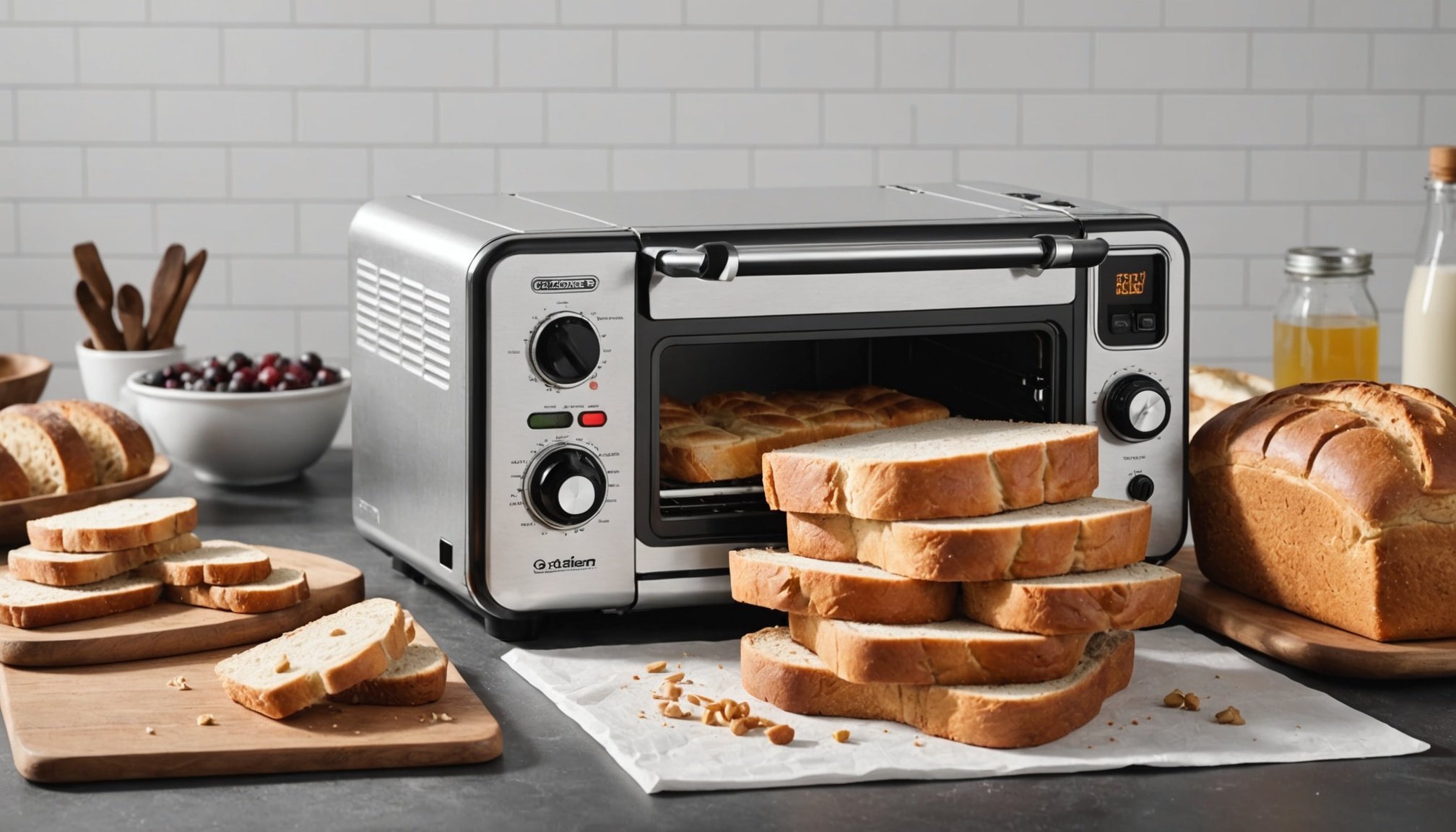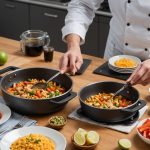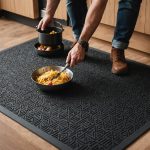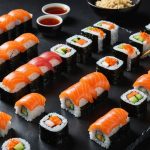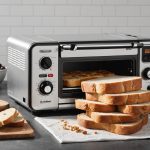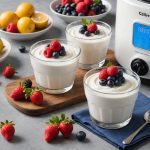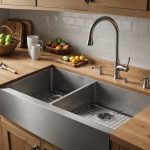Choosing the right high-capacity bread machine can elevate your home baking to new heights. With the ability to produce larger batches, finding a model that suits your needs is vital. Key features like kneading power, programmable settings, and bread size options make a significant difference. Understanding these essentials will help you select the perfect bread machine, ensuring that every loaf boasts flavor and texture. Get ready to embrace homemade bread with ease!
Understanding High-Capacity Bread Machines
Exploring the world of home baking with modern appliances.
In the same genre : Choosing the Perfect Kitchen Sink for Your Charming Farmhouse in the UK: A Comprehensive Guide
High-capacity bread machines have revolutionized home baking by offering the ability to produce larger loaves efficiently. These machines cater to families or individuals who require more than the standard size loaf, providing convenience and versatility. A high-capacity bread machine typically has a larger pan and a more powerful motor compared to standard models. This enables it to handle more dough and produce bread with consistent texture and taste.
Types of High-Capacity Bread Machines
Variety in design and functionality to suit different needs.
Also read : Choosing the Perfect Kitchen Sink for Your Charming Farmhouse in the UK: A Comprehensive Guide
There are several types of high-capacity bread machines available, each with unique features. Some models offer programmable settings, allowing users to customize their baking process. Others come with additional functions such as gluten-free or sourdough settings. Here’s a brief comparison:
| Feature | Standard Model | High-Capacity Model |
|---|---|---|
| Loaf Size | Up to 2 lbs | Up to 3-4 lbs |
| Motor Power | Moderate | High |
| Custom Settings | Limited | Extensive |
Key Differences Between High-Capacity and Standard Models
Understanding what sets them apart.
The primary difference between high-capacity and standard bread machines lies in their size and capability. High-capacity machines are designed to handle larger quantities of ingredients, making them ideal for frequent bakers or larger households.
Essential Features to Evaluate
Delving into the specifics of what makes a bread machine stand out.
When selecting a bread machine, especially for large families or gatherings, capacity is a crucial factor. Opt for models that offer the ability to bake loaves up to 3-4 lbs, ensuring ample servings for everyone. This is particularly beneficial for those who regularly entertain guests or have larger households.
Key Baking Functions
Exploring the diverse options available for baking enthusiasts.
A high-quality bread machine should provide a variety of baking functions. Look for programmable settings that allow for different crust preferences—light, medium, or dark. Additionally, having preset programs for whole grain, French, and sweet breads can enhance your baking repertoire. These features not only simplify the process but also ensure consistency in every loaf.
Importance of Customizable Settings
Why personalization is key in modern baking appliances.
Customizable settings are essential for personalized baking experiences. They enable users to adjust kneading, rising, and baking times according to specific recipes or dietary needs. For instance, if you have a preference for gluten-free bread, ensure your bread machine includes this function. Such flexibility empowers bakers to experiment and perfect their craft, adapting to various preferences and occasions.
- Capacity: Up to 4 lbs
- Baking Functions: Variety of crust settings
- Customizable Settings: Personalization options for unique recipes
By focusing on these core features, you can select a bread machine that meets your unique baking needs effectively.
Ease of Use and Cleaning
Enhancing your baking experience with simplicity and efficiency.
User-Friendly Controls
For those new to baking, user-friendly bread machines are essential. They often feature intuitive controls and a clear interface, simplifying the process for beginners. Look for models with digital displays and straightforward buttons that make selecting programs and settings effortless. This ease of use encourages more frequent baking and experimentation.
Importance of Removable Parts
Maintaining bread machines is crucial for long-term performance. Removable parts, like the baking pan and kneading blade, facilitate easy cleaning. These components can often be detached and washed separately, reducing the hassle of maintenance. Ensuring your machine has dishwasher-safe parts can further simplify the cleaning process, making it more appealing to use regularly.
Best Practices for Maintenance
Regular care extends the lifespan of user-friendly bread machines. Here are some best practices:
- Clean the machine after each use to prevent residue buildup.
- Inspect and replace worn parts as needed.
- Store in a dry place to avoid moisture damage.
By following these guidelines, you can keep your machine in optimal condition. Prioritizing ease of use and cleaning ensures a seamless baking experience, allowing you to focus on creating delicious bread with minimal effort.
Durability and Build Quality
Ensuring your bread machine stands the test of time.
Materials Used in High-Capacity Bread Machines
The durability of a bread machine is significantly influenced by the materials used in its construction. High-capacity bread machines often feature stainless steel exteriors, which provide resistance to wear and tear. Additionally, non-stick coatings on the interior components, such as the baking pan, ensure longevity by preventing food residue buildup.
Indicators of Build Quality and Durability
When evaluating bread machine durability, look for robust construction and solid assembly. Machines with reinforced hinges and sturdy control panels often indicate superior build quality. A well-constructed machine not only enhances performance but also increases its lifespan.
Key Indicators of Quality:
- Material: Stainless steel, non-stick coatings
- Construction: Reinforced hinges, sturdy panels
- Design: Ergonomic and user-friendly
Warranty Considerations
Warranties are crucial for assessing a machine's durability. They often cover defects in materials and workmanship, providing peace of mind. A comprehensive warranty indicates the manufacturer's confidence in their product's longevity. Be sure to review what is covered, including the duration and specific components.
By focusing on these aspects, you can ensure your investment in a bread machine is both practical and enduring.
Comparing Popular Models
An insightful look into the best bread machines available.
Side-by-Side Comparison of Top-Rated High-Capacity Models
When considering the best bread machines, it's crucial to compare top-rated models. Each model offers unique features that cater to different needs. A side-by-side comparison helps identify which machine aligns with your baking preferences.
| Model Name | Capacity | Key Features | Price Range |
|---|---|---|---|
| BreadMaster Pro | 4 lbs | Customizable settings, LCD | $150 – $200 |
| LoafKing Deluxe | 3.5 lbs | Gluten-free option, timer | $120 – $180 |
| Baker's Choice XL | 4 lbs | Multiple crust settings | $180 – $230 |
Key Features and Specifications of Each Model
The BreadMaster Pro stands out with its extensive customizable settings and user-friendly LCD interface. Meanwhile, the LoafKing Deluxe offers a convenient gluten-free option and a programmable timer, making it ideal for those with dietary restrictions. The Baker's Choice XL excels in versatility with multiple crust settings, catering to diverse baking preferences.
Price Range Analysis for Different Models
Understanding the price range of these best bread machines is essential for making an informed decision. While the LoafKing Deluxe is more budget-friendly, the Baker's Choice XL provides advanced features at a higher price point, reflecting its enhanced capabilities.
Brand Recommendations
Identifying the most trusted bread machine brands for reliable performance.
Overview of Reputable Brands
Choosing a bread machine involves considering trusted brands known for their reliability and quality. Brands like Zojirushi, Cuisinart, and Breville have consistently received high praise for their innovative designs and performance. These companies have established a reputation for producing durable and efficient machines that cater to diverse baking needs.
Factors Contributing to Brand Reliability
Brand reliability is often linked to consistent performance, quality materials, and excellent customer service. A reliable brand typically offers comprehensive warranties and robust support, assuring consumers of their commitment to quality. Furthermore, these brands frequently update their product lines, incorporating the latest technology to enhance user experience.
User Reviews and Ratings
Consumer feedback plays a crucial role in assessing brand trustworthiness. User reviews often highlight the strengths and weaknesses of different models, providing valuable insights into real-world performance. Here's a brief look at consumer ratings:
| Brand | Average Rating | Key Strengths |
|---|---|---|
| Zojirushi | 4.8/5 | Durability, ease of use |
| Cuisinart | 4.5/5 | Versatility, design |
| Breville | 4.7/5 | Innovative features, support |
By focusing on these aspects, you can select a bread machine from a trusted brand that meets your baking requirements effectively.
Price Ranges and Budget Considerations
An in-depth look at cost-effective options for high-capacity bread machines.
Understanding Bread Machine Prices
When exploring bread machine prices, it's essential to recognize the variety in cost across different models. High-capacity machines typically range from $100 to $300. This variation depends on features, brand reputation, and build quality. Investing in a quality machine ensures durability and performance, offering long-term value.
Budget-Friendly Options
For those seeking budget-friendly options, several models provide excellent functionality without sacrificing quality. Machines priced between $100 and $150 often include essential features like programmable settings and multiple loaf sizes. Opting for these models can be a smart choice for those mindful of their budget.
Value of Investing in Quality
Investing in a high-quality bread machine can be beneficial in the long run. While initial costs might be higher, the value lies in the machine's durability and advanced features. A reliable machine reduces the need for frequent replacements and repairs, ultimately saving money over time.
- Price Range: $100 – $300
- Budget-Friendly: $100 – $150
- Investment: Long-term savings, enhanced features
By understanding these price ranges and budget considerations, you can make an informed decision that aligns with your financial and baking needs.
Tips for Maximizing Performance
Enhancing your bread machine experience with practical advice.
Best Practices for Optimal Baking Results
Achieving the best baking results with your bread machine requires attention to several key factors. Firstly, ensure that ingredients are measured accurately. Using a digital scale can help maintain consistency in your recipes. Additionally, use fresh, high-quality ingredients to enhance flavor and texture.
Common Issues and Troubleshooting Tips
Even the most advanced bread machines can encounter issues. If your bread is not rising properly, check the freshness of your yeast. Also, ensure that the water temperature is neither too hot nor too cold, as this can affect yeast activity. If your bread is too dense, you might need to adjust the flour-to-liquid ratio.
Troubleshooting Tips:
- Check yeast freshness: Expired yeast can lead to poor rise.
- Adjust liquid levels: Too much or too little can affect texture.
- Monitor kneading: Ensure dough is not too sticky or dry.
Recommendations for Ingredient Quality and Measurement Accuracy
For optimal performance, prioritize ingredient quality. Organic flours and non-GMO yeast can significantly improve your baking results. Accurate measurement is crucial; even small deviations can impact the final product. By applying these performance tips, you can enhance your bread machine's efficiency and enjoy consistently delightful loaves.

